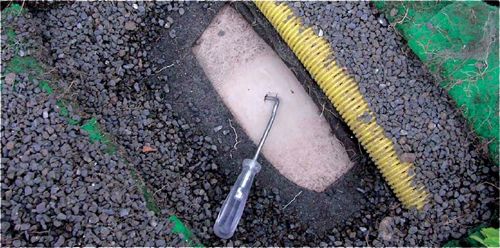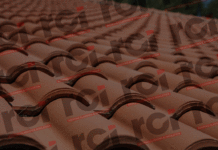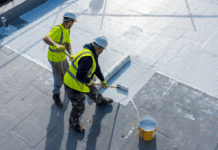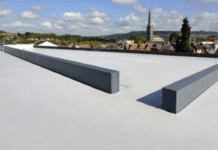 There are many advantages associated with flat roof design. It usually equates to lower building costs, the technical design goes hand in hand with low weight ratio, and the scope for potential development on otherwise wasted roof space is huge; solar and green roof / SUDS to name only two. But there can be no denying that building owners, tenants and facilities managers do worry about the water ingress with flat roofs as opposed to pitched roofs that can quickly shed water. Even though this fear is more perceived than real – certainly where quality flat roofing systems are concerned – water getting in through the roof is a fear of many designers.
There are many advantages associated with flat roof design. It usually equates to lower building costs, the technical design goes hand in hand with low weight ratio, and the scope for potential development on otherwise wasted roof space is huge; solar and green roof / SUDS to name only two. But there can be no denying that building owners, tenants and facilities managers do worry about the water ingress with flat roofs as opposed to pitched roofs that can quickly shed water. Even though this fear is more perceived than real – certainly where quality flat roofing systems are concerned – water getting in through the roof is a fear of many designers.
A solution to this issue was founded in 1996 with the launch of International Leak Detection (ILD), a waterproofing integrity testing system which we recently demonstrated in conjunction with Sika Trocal membrane at the RCI Show.
ILD involves a trio of ground-breaking techniques. One of the techniques, Electric Field Vector Mapping (EFVM) testing, is carried out by applying water on the surface of a roofing membrane to create an electric field and using the water as a conductive medium. Any breaches in the membrane will cause an electrical connection to occur. Certified ILD inspectors are able to read the directional current of the flow to pinpoint its point of entry.
The second technique, ProtectSys ‘B’, consists of a highly electro-conductive material, contact plates and contact boxes that are integrated directly into the roof system to be protected. The system is placed directly beneath the waterproofing membrane, therefore should any future moisture enter into the ProtectSys ‘B’ level the system will determine the defect’s exact location.
Perhaps most impressive of all is ILD’s ProtectSys ‘WM’ early warning system. This involves radio signals which measure temperature and relative humidity inside and outside a roof’s insulation layer. The measurements are transmitted via radio signals to a central unit and mailed by G.S.M to a central computer, which analyses the roof’s condition. Should the reading prove too high, a warning is issued and repairs can be instigated before real damage is incurred.
The ILD systems were developed to eradicate the ‘gambling’ aspects of roof performance and provide building owners with security and peace of mind. The system is in use globally – and has been particularly well received in Germany, where roofing innovation tends to set the benchmark – with each subsidiary or partner having to fully comply with ILD’s demanding quality assurance procedures.
With flat roofs, there can be no absolute assurances against leakage or water ingress, but ILD is the guaranteed fault detection system to prevent minor problems escalating to something major.
http://gbr.sika-trocal.sika.com
A contractor’s guide to the leak detection application process:
Firstly, the specified vapour barrier should be laid in accordance with the manufacturer’s current instructions. Insulation boards should then be installed on to the surface of the vapour barrier again in accordance with the manufacturer’s instructions.
With these in place, install the non-woven glass fleece by loose laying to the upper surface of the insulation boards. The non-woven glass measurement fleece should be laid with side and end laps of between 50mm to 80mm and the material set back 20mm from all perimeter details, metals, rooflight and ventilator upstands, roof outlets, soil pipe vents, or at any other penetration or upstand details on the roof area.
It’s then time to install two contact plates into the individual roof area, loose laid onto the nonwoven glass fleece and secured with the appropriate adhesive tape in accordance with the current instructions. With larger individual roofs over 1,500m² in area, additional contact plates are required. Contractors should then install two cable access duct components positioned above or as near as is practical to the contact plates, in accordance with the current instructions. It’s important to ensure the contact plate cable is brought up through the proprietary cable access duct component, in readiness for the visit of the ILD testing technician.
From here, install the single ply roofing membrane to the surface of the insulation boards in accordance with the manufacturer’s instructions. Then install it to all upstand perimeter details in accordance with all current instructions. The roof surface should be left in a clean and tidy condition in readiness for the ILD testing technician’s visit. Contractors should provide a qualified membrane applicator who would wet the membrane surface both prior to and during the testing operation, plus be available to make good any damage found within the waterproofing system, prior to retesting.



